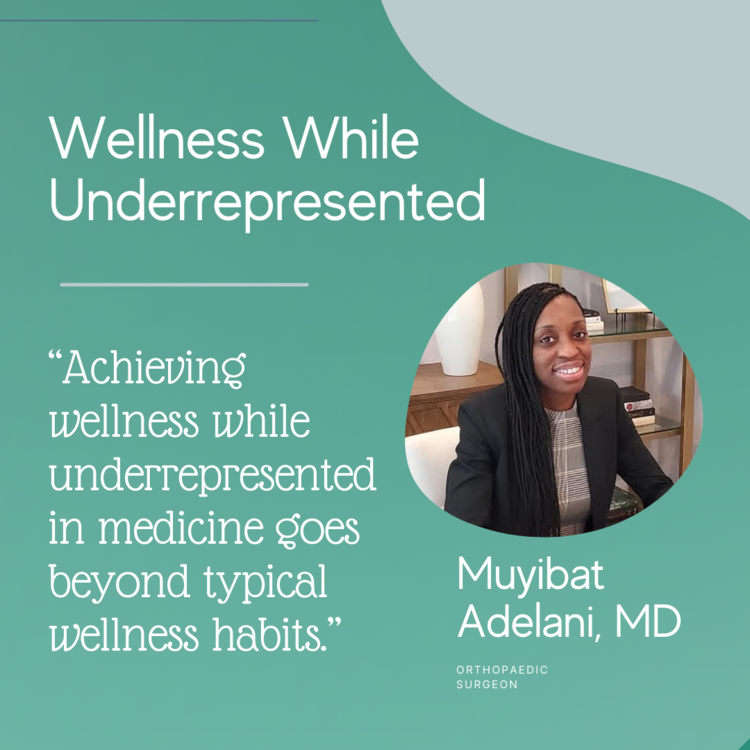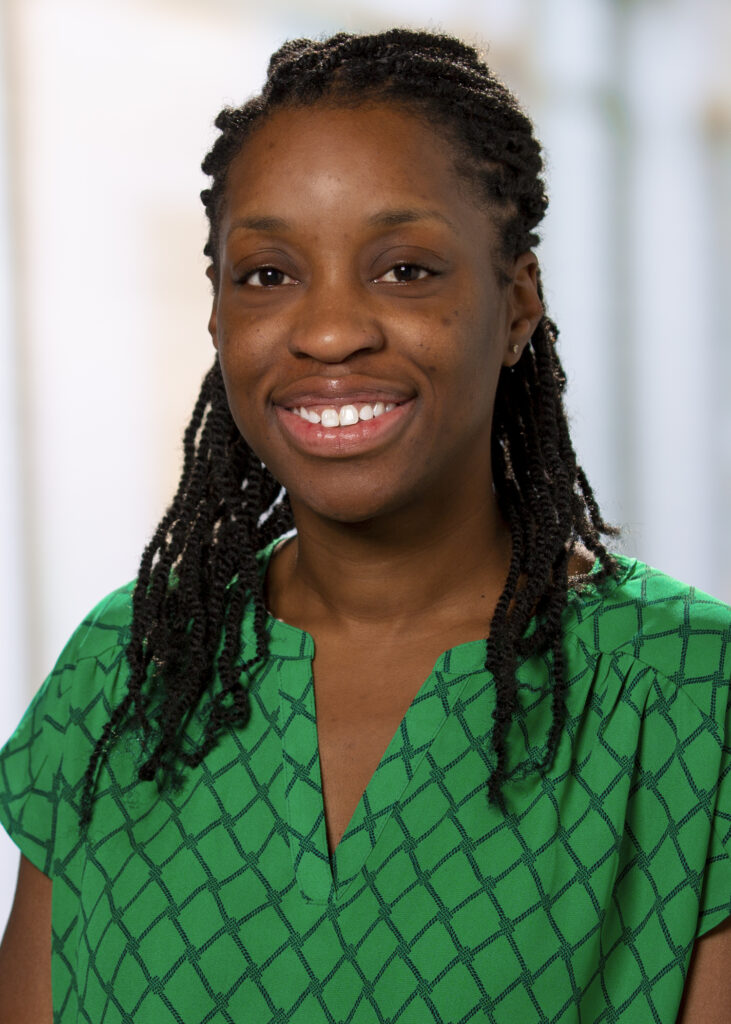Being different requires a lot of energy. As a Black woman in orthopaedic surgery, I put a lot of effort into figuring out how to navigate the spaces I am in because none of them feel comfortable. I almost always feel out of place, so I am highly perceptive of the people around me—how they receive me, how they speak to me, even how they physically move around me. And I am cautious about how I behave around them. Nearly everything I do at work is done with some level of trepidation, so much so that I have become a shell of myself. I cannot simply say what I think or do what comes natural to me because it runs a high risk of being misinterpreted or misunderstood. Not fitting in means that every move, every word, everything requires extra thought or strategy.
On top of this self-consciousness is the weight of empathy for others who look like me. As a physician from an underrepresented group, I am not only conscious of how I am being treated, but also highly conscious of the treatment of others. When I see underrepresented colleagues and trainees being treated unfairly, I hurt too. I am compelled to advocate on their behalf, often to no avail, and sometimes, to my own detriment. Similarly, I necessarily carry the burden of advocating for fair and just treatment of patients of color. Challenging the established order, or individual leaders, at times, is often quite lonely, as not many people are willing or able to join in this fight.

The seemingly constant conflict between my own authenticity and success, or quite frankly, survival, in my career is exhausting. This work asks people like me to compartmentalize significant portions of ourselves for the comfort of the majority. But the freedom to be who you are is a major tenet to wellness. It is important for one’s actions to align with one’s beliefs. However, the experience of the underrepresented seems to undermine this. Being surrounded by people who are nothing like me, who do not understand me, and may not want to understand me creates an environment that is a major threat to well-being. The misalignment of my own values and beliefs with what is happening around me creates chronic and persistent moral injury. Not to mention, this is all on top of a job that we all acknowledge is already very stressful. With these additional challenges, the usual strategies for wellness as a physician simply may not be enough.
In order to achieve wellness while underrepresented in medicine, one must have an extraordinarily strong sense of identity. It must be unwavering. A strong identity protects you from compromising yourself—the essence of who you are—for the sake trying to belong. You must know who you are so that you can withstand the external pressures of conformity. Establish guiding principles by which you will practice—ideals that you will be committed to and thresholds below which you will never go. Knowing what is most important to you and sticking to it will help diminish (but not eliminate) the aforementioned conflict between authenticity and success. These conflicts will surely come, but your guiding principles will help make the resolution of these conflicts much easier. Being steadfast in your own identity allows you to find peace when forced to decide between yourself and certain aspects of your work.
Another critical component for peace is the identification of safe spaces, both within and outside of work. Being with people who share your values, beliefs, and challenges can be a tremendous relief to this endless energy suck that we experience at work. There is something about being around others who simply understand, without an excessive amount of explanation or justification. They get it. And they don’t dismiss or invalidate you. They support you as you are. Finding others in your workplace, or at least who do what you do, can provide the necessary psychological safety to be able to discuss the specifics of healthcare or your practice and the way that it impacts you on a personal level.
I also believe it’s essential to have a safe space that is completely separate from work. Medicine is a space that is not really ready to see someone like me as a leader. I am asked to validate my own credentials more often than my white colleagues—to patients, to nurses, to other physicians. In a world that does not believe that someone like me can even be a physician, this becomes a role that I play, a part that I act out on a daily basis. This goes beyond just being professional. The way that I speak, dress, even wear my hair has been adjusted to fit this part. The things I speak up about have been limited to what is deemed suitable for this role. Maintaining this role requires a lot of energy. It is akin to wearing a heavy costume or mask. But at some point, this mask has to come off. People with whom you can be your true authentic self can provide the acceptance necessary to diminish the emotional loneliness that many of us feel as physicians. It is essential for your spiritual wellness to find spaces where you can just be you, without worrying about who is watching and what they think.
Finally, wellness for the underrepresented requires the presence of at least one ally. A true ally believes you and your perspective, regardless of whether they personally understand it. Furthermore, a true ally is willing to fight on your behalf because it is the right thing to do, even if it requires them to challenge their own friends. As a physician from an underrepresented group, an ally is needed to carry the weight when you become too tired to continue. Without this, many of us have and will continue to burn out of this profession.
Achieving wellness while underrepresented in medicine goes beyond typical wellness habits. It requires the establishment of a strong identity as a foundation and the conscious protection (and replenishment) of one’s energy. The focus on diversity in medicine must acknowledge that physicians of color experience this profession differently and must provide the necessary tools to not only survive, but to thrive.

Muyibat Adelani, MD
Muyibat is a board-certified orthopaedic surgeon in Saint Louis, Missouri and has been in practice for six years. She completed her residency at Washington University and her fellowship in joint replacement at Stanford University. Her clinical interests include primary and revision hip and knee arthroplasty. Outside of work, she enjoys sports, photography, and interior design.
